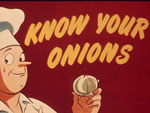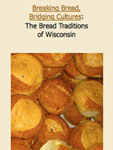Historical research usually begins with reading. Books and articles open your eyes, and open the door to a period. They engage and entice you, and before you know it, you're immersing yourself in literature written about the period you're studying. It is wonderful to read literature—both fiction and nonfiction—written during the period, as well. Children always get a kick out if it when I tell them that when I was researching Felicity, my character who lived in Williamsburg, Virginia just before the Revolutionary War, I read a journal kept by a tutor who lived with a family that had eight children in it. My 21st-century readers laugh when I tell them that two of the sisters in the family had a fight because one sister borrowed the other sister's hairbrush without asking. The hairbrush owner was so mad that she waited for her sister to fall asleep, and then she cut off her eyebrows! And this was in 1773!
If you can find books and stories written for children or about children from the period your class is studying, those stories will be a great way to engage your students. Books with paintings, photographs, and advertisements for your students to scrutinize are fun, too. Your students will see that though clothes and conveyances, art and architecture, design and concepts of beauty have changed, human nature—especially children's natures—have not!
Noses, Hands, Tongues, and Ears Are Excellent Learning Tools
But reading, that is, using your eyes to research a period, is not the only way to make a period from the past come to life. Your students will enjoy learning by using all of their senses. For example, to help children have a tactile sense of how Felicity felt in her 18th-century clothes, I ask children to take a deep breath and then use their hands to push in on their rib cages as hard as they can. I explain that boys, men, ladies, girls, and even babies wore stays in the 18th century, and stays were sort of like a very tight vest. The children see that their imaginary stays make them stand up very straight. They feel constricted. They can hardly breathe. I explain that just as Felicity's body was held in by the stays, so too her life was held in and constricted by rules that she was expected to follow. The children understand the metaphor—and they sigh with relief when I tell them to let go! They're glad they live in the 21st century, when our bodies and our lives are freer.
Scent makes a direct and powerful connection to memory; when we smell a familiar scent, we are automatically transported back to the time it reminds us of . . . .
Scent is particularly evocative. When I speak to children about Josefina, who lived on a rancho in New Mexico in 1824, I give the children herbs to smell: peppery, flowery, minty, musty, fishy, soapy, and yeasty-smelling herbs. The children can close their eyes, smell the herbs, and be transported back in time to Josefina's rancho. There is a subtlety to the sense of smell, and smells are fun, too! If you can collect soaps, herbs, spices, or flowers connected to the period you're studying, your students will enjoy it. Scent makes a direct and powerful connection to memory; when we smell a familiar scent, we are automatically transported back to the time it reminds us of and we recall the circumstances, emotions, and sensations. Once your students have smelled cod liver oil, commonly dosed to children in the 19th and even early 20th centuries, they'll never forget it!
Taste is equally evocative, and equally revealing about an historical period. That salty ham from Felicity’s period can lead to a discussion about food preservation, lack of refrigeration, transportation, health, nutritional differences between economic strata, celebrations, hygiene—well, you get the idea! I remember a wonderful event for children at which we ate food from the World War II era, as if we were my character, Molly McIntire. Tasting cake made without sugar or butter, bread made with tomato juice, mashed turnips, and Spam sandwiches led to a great discussion about rationing, Victory Gardens, black market shenanigans, vitamins, food advertising, grocery shopping, regional food specialties, and even body consciousness. (It was considered healthy for a child to be rather stout and sturdy, and parents sought ways to encourage their children to eat up. We know better now!)
Seeing, feeling, smelling, tasting, and hearing are varied and vibrant avenues for teaching about historical periods.
Last but not least, your students' sense of hearing can enchant them and educate them about an historical period. Listening to the rousing John Philip Sousa marching music from the turn of the last century—the period my character Samantha lives in—will thrill your students and tell them a great deal about the highly patriotic Zeitgeist of 1904. Listening to the clackety-clack of typewriter keys and the ding! of the carriage return on a 1930s manual typewriter and comparing those sounds to the quiet tap-tap-tap of computer keys will inform them about how our communication tools have evolved from the Depression era to today. Sounds that have NOT changed can be fun and informative, too. I still laugh when I remember that when I was writing about Josefina, I needed to know the sound a piano made when it was dropped. I called all the piano movers in the Washington, DC area yellow pages. You'll be distressed to learn that every single mover could tell me—and imitate!—exactly the sound a dropped piano makes! I tried to describe the sound in words so that my readers could "hear" it, too.
Seeing, feeling, smelling, tasting, and hearing are varied and vibrant avenues for teaching about historical periods. They're fun, and using them is just good sense!



